
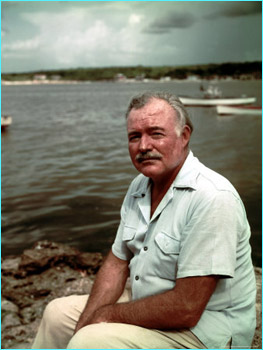
Ernest Hemingway
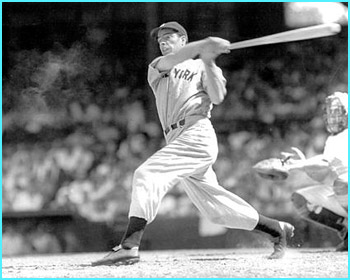
'Joe DiMaggio' a famous baseball player, and was mentioned in the story.
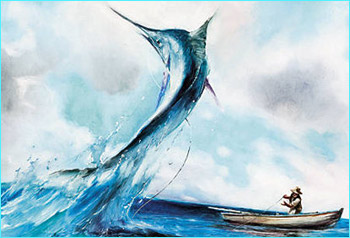
Cartoon representation of 'The Old Man and the Sea'
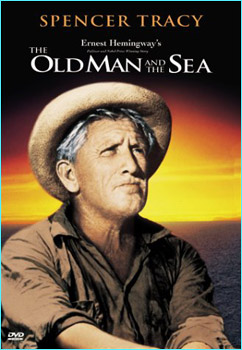
DVD cover of 'The Old Man and the Sea'
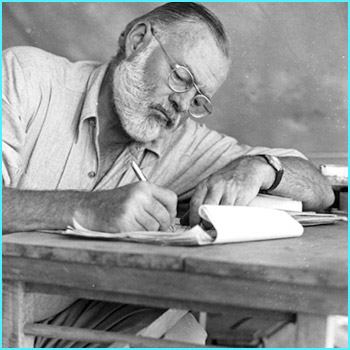
Ernest Hemingway writing a story.
Perseverance Brings Success
The American novel The Old Man and the Sea by Ernest Hemingway contains a theme and symbolisms which we can see as we go further along in the story. The theme that surrounds the story is with every perseverance come great success, which can be seen in the main character Santiago as he lives his life and faces various challenges.
In this novel, we follow the life of an old Cuban fisherman as he faces the cruelty of his surroundings. It all began when Santiago started having great misfortunes. He lived in a society where people’s livelihood depended on the ocean. Santiago has been having an extended amount of bad luck; as a result, he hasn’t caught a single fish for 84 straight days. Every time he would go to their local café, his fellow fishermen would always humor him. Having this misfortune, Santiago couldn’t accept defeat and decided to go far out into open sea where the bigger fishes are; farther than any fisherman has gone before. Santiago believes that “Man is not made for defeat” and “you can defeat a man but not destroy him.” There, he witnessed how cruel the world is; this made him realized that you need to endure until the end for you to reach victory.
An example of symbolism that the reader can find is his use of Joe DiMaggio. Joe DiMaggio is a famous baseball player who stood as an inspiration to Santiago. DiMaggio is handicapped but still one of the best ballplayers of all time. Santiago was inspired by him because even though he was disabled, he was still able to succeed. We can see this when Santiago mentioned “but I must have the confidence and I must be worthy of the great DiMaggio who does all things perfectly even with the pain of the bone spur in his heel”. DiMaggio was in Santiago’s thoughts when he was battling with the marlin. Even though Santiago was beaten and hurt, he did not give up and just kept going. It illustrates how he is tolerant just like Jesus Christ.
In Santiago’s eyes, we can see that he is somewhat likened to the life of Christ. As we go along in the book, we can compare his life to Jesus and notice that they are very much alike. To Santiago, there is always hope. He’s trying to catch the marlin for the good of other people, while the other people do not deserve Santiago’s actions. Just like the Lord Jesus, He sacrificed himself for the people although the people did not deserve it. This is just one example of many symbolisms that Hemingway used in this story.
Another symbolism that we can find throughout the story is the ocean. The ocean represents life. You don’t know what you will find, and the mysteries that lie beyond it. When the marlin is first introduced to us, it is depicted as a treasure. The treasure lies somewhere deep in the mysterious ocean. The story gives us a message that once you lay your hands on the treasure, you must not let go of it even if it means putting your life in jeopardy. This is exactly what Santiago did, he did not let go of the marlin until he caught it. Despite the hardships, Santiago endured all the pain and never stopped until he was able to grasp it in his hands. We can see that Santiago looked at it in a way that it doesn’t matter if he was bruised or be thrown overboard, it will all be worth it when he finally possesses the treasure. Hemingway used this as a gateway to change the representations of the characters present.
This imagery changes just when Santiago catches the marlin. Here the marlin started to link to Christianity. From this moment on, we can look at the marlin being food so that others may have something to eat. But the sins or the sharks try to devour the fish or good deeds of the people. The sins can put up a good fight as mentioned in the book "The other shark had been in and out and now came in again with his jaws wide. The old man could see pieces of the meat of the fish spilling white from the corner of his jaws..." The author is basically telling the readers that sins can drive our good deeds or nobility away. But even if the sharks eat the flesh of the marlin, they cannot eat the rest of its bones. Here Santiago is also shown by the author being like Jesus Christ himself. Jesus fights evil in Jerusalem, while Santiago fights his own idea of evil, which are the sharks. The bones serves as Santiago’s victory. He discovered this when a tourist was amazed by his catch and when he found out that it became an inspiration to Manolin and other fishermen in his town used to make him the local laughingstock.
We can once again connect Santiago to Jesus as he comes back home. After his journey, he quickly became a Jesus symbol. Santiago shows a great deal of patience and noblility. He shows patience because even though he did not catch a single fish for a very long time, he still endured. Santiago describes that his hands was hurting like a man having a nail go through his hand "...a noise such as a man might make, involuntarily, feeling the nail go through his hand and into the wood". When Santiago arrived in his home, he was described the old man on his back with his palms up. This is similar to Jesus’ position when he was nailed on the cross.
Further religious meaning can be found with use of numbers if the reader gave it an in-depth analysis. For example, his battle or struggle with the fish lasted for three days. Three is seen by the Catholic Church as the Holy Trinity, or the power of God divided into three; God himself, Jesus Christ, and the Holy Spirit. Another number that we can see is the number seven. Santiago killed the marlin on its seventh turn, and there were also seven sharks that tried to attack the marlin. Seven is another religious number because it represents ‘The Creation’ which can be found in the first chapter of the book of ‘Genesis’. Another number that can be found is the number forty. Santiago have fished with his apprentice with no catch for forty straight days. The number forty in religion refers to Moses’ journey to Mount Sinai and he was gone for forty days and forty nights until acquiring the ‘Ten Commandments’. Symbolism played a big role to deliver the author’s ethos to the reader, but so as diction.
Hemingway’s use of diction helped him establish a theme. Since our theme is ‘Perseverance’, the author used something like making the old man wait for ‘eighty-four days’ until finally giving him a chance to catch something. This highlighted that the man waited for a very long time and persevered until finally reaching success.
In conclusion, Santiago showed the characteristics of an ideal man. Even though he faced death defying trials and challenges, even though he was alone in life, he did not look back but just kept on going. Not only he passed the ultimate test for mankind, but he passed it with flying colors. Santiago showed the readers that with perseverance comes great success. You may lose everything you have, but in the end if u have enough faith in yourself, you will have more riches far beyond your dreams.
Bibliography
"The Old Man and the Sea: symbols". http://www.litcharts.com/lit/theoldmanandthesea/symbols, March 18, 2009.
"Old Man and the Sea". http://www.e-scoala.ro/referate/engleza_hemingway_old_man.html, March 21, 2009.
"Santiago at the plate: baseball in 'The Old Man and the Sea". http://www.questia.com/googleScholar.qst?docId=5000436557, March 21, 2009.